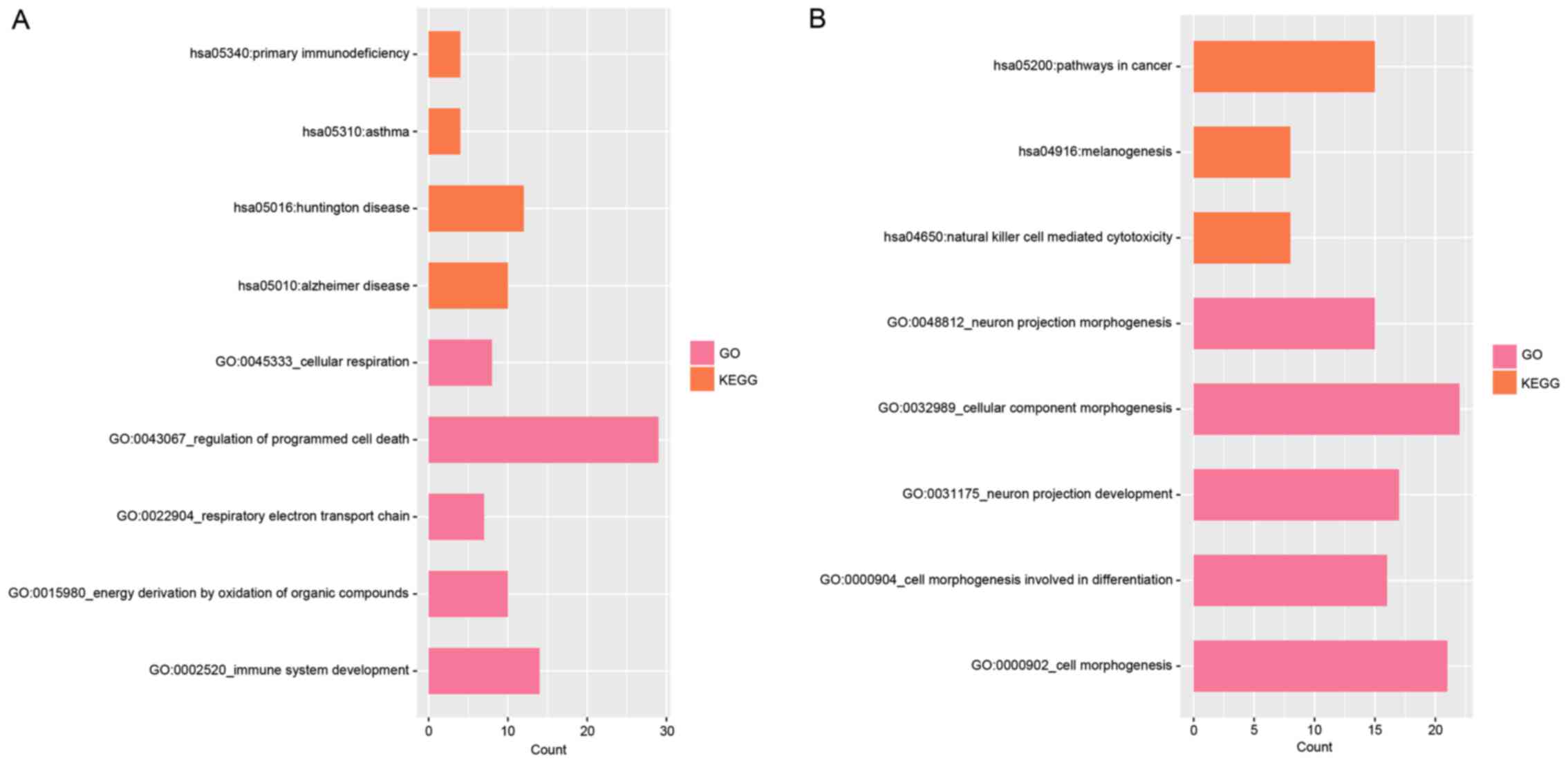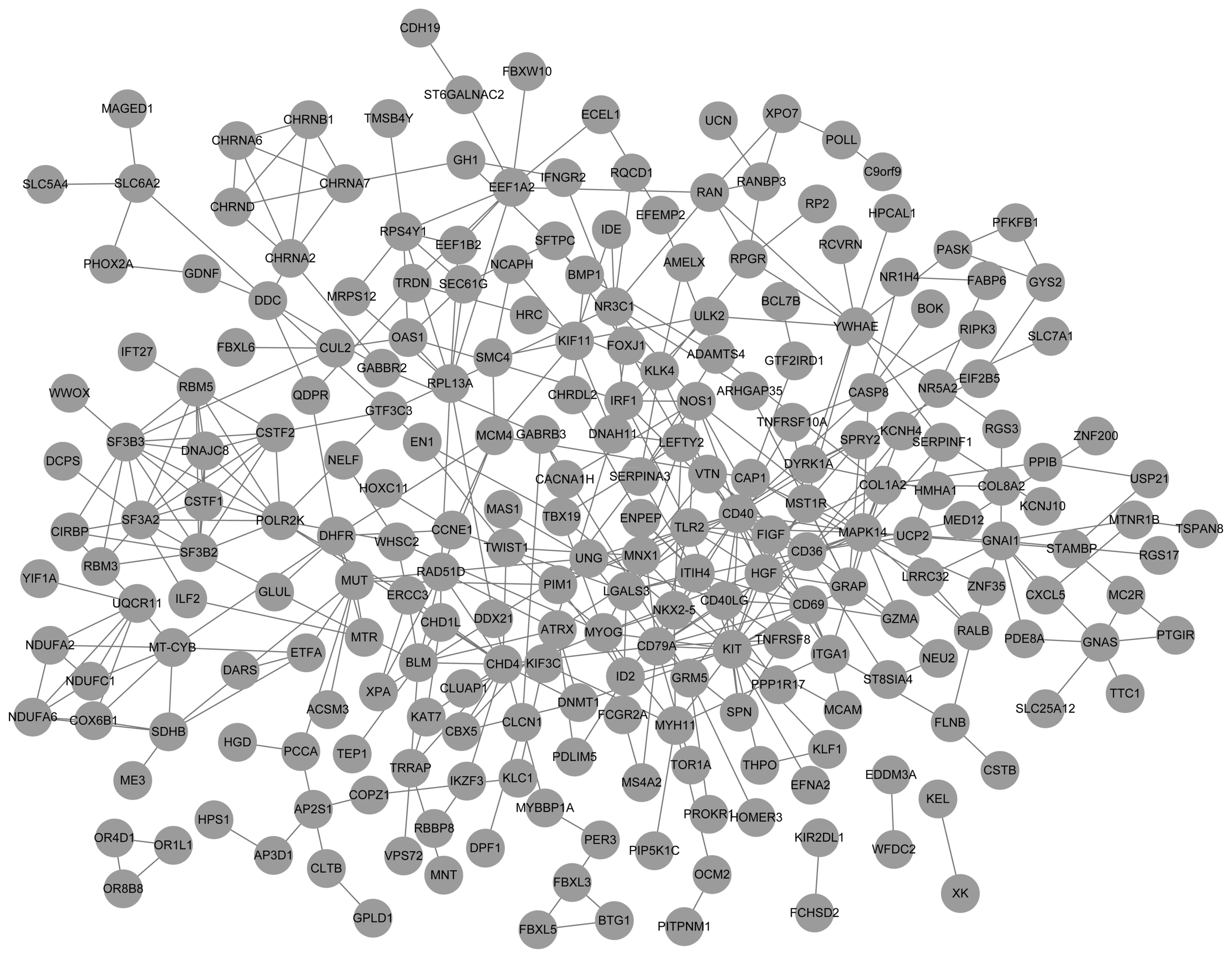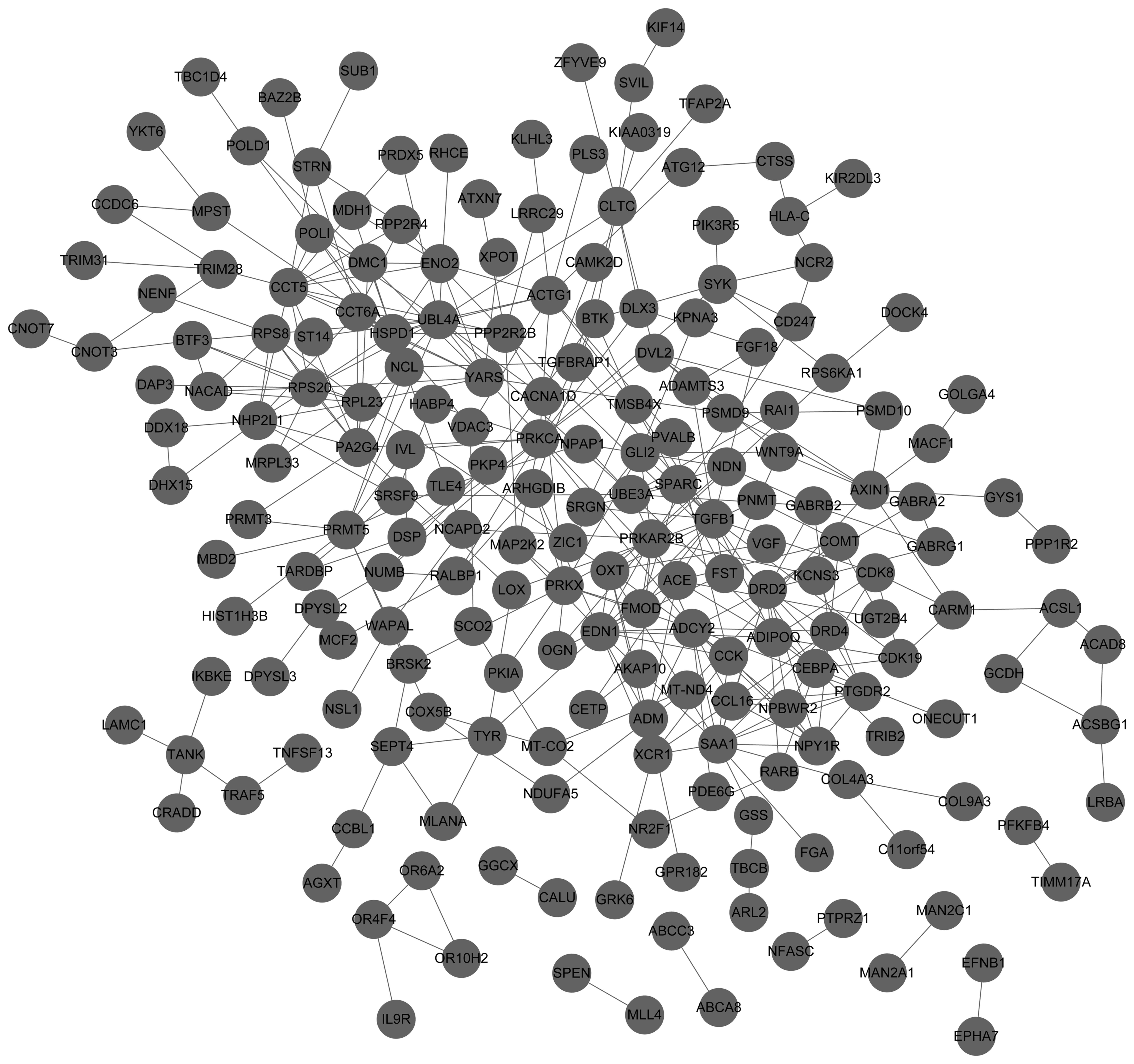|
1
|
Chalouhi N, Hoh BL and Hasan D: Review of
cerebral aneurysm formation, growth, and rupture. Stroke.
44:3613–3622. 2013. View Article : Google Scholar : PubMed/NCBI
|
|
2
|
Blignaut Gerrit, Loggenberg Eugene, Vries
D and Coert: The radiological appearance of intracranial aneurysms
in adults infected with the human immunodeficiency virus (HIV).
Orig Res Sa J Radiol. 18:1–4. 2014.
|
|
3
|
Brown RD Jr: Management of cerebral
aneurysms. Mayo Clinic Proceedings. 79:288–302. 2004. View Article : Google Scholar
|
|
4
|
Olafsson E, Hauser WA and Gudmundsson G: A
population-based study of prognosis of ruptured cerebral aneurysm:
Mortality and recurrence of subarachnoid hemorrhage. Neurology.
48:1191–1195. 1997. View Article : Google Scholar : PubMed/NCBI
|
|
5
|
Varble N and Meng H: Vortex imprints at
the wall, but not in the bulk, distinguish ruptured from unruptured
intracranial aneurysms. Presented at the DFD15 Meeting of The
American Physical Society. (abstract L23.00008). 2015, http://meetings.aps.org/link/BAPS.2015.DFD.L23.8
|
|
6
|
Lall RR, Eddleman CS, Bendok BR and Batjer
HH: Unruptured intracranial aneurysms and the assessment of rupture
risk based on anatomical and morphological factors: Sifting through
the sands of data. Neurosurg Focus. 26:E22009. View Article : Google Scholar : PubMed/NCBI
|
|
7
|
Mohan D, Munteanu V, Coman T and Ciurea
AV: Genetic factors involves in intracranial aneurysms-actualities.
J Med Life. 8:336–341. 2015.PubMed/NCBI
|
|
8
|
Akagawa H, Tajima A, Sakamoto Y, Krischek
B, Yoneyama T, Kasuya H, Onda H, Hori T, Kubota M, Machida T, et
al: A haplotype spanning two genes, ELN and LIMK1, decreases their
transcripts and confers susceptibility to intracranial aneurysms.
Hum Mol Genet. 15:1722–1734. 2006. View Article : Google Scholar : PubMed/NCBI
|
|
9
|
Xu J, Ma F, Yan W, Qiao S, Xu S, Li Y, Luo
J, Zhang J and Jin J: Identification of the soluble form of
tyrosine kinase receptor Axl as a potential biomarker for
intracranial aneurysm rupture. BMC Neurol. 15:232015. View Article : Google Scholar : PubMed/NCBI
|
|
10
|
Ollikainen E, Tulamo R, Lehti S,
Lee-Rueckert M, Hernesniemi J, Niemelä M, Ylä-Herttuala S, Kovanen
PT and Frösen J: Smooth muscle cell foam cell formation,
apolipoproteins and ABCA1 in intracranial aneurysms: Implications
for lipid accumulation as a promoter of aneurysm wall rupture. J
Neuropathol Exp Neurol. 75:689–699. 2016. View Article : Google Scholar : PubMed/NCBI
|
|
11
|
Luo J, Jin H, Jiang Y, Ge H, Wang J and Li
Y: Aberrant Expression of microRNA-9 contributes to development of
intracranial aneurysm by suppressing proliferation and reducing
contractility of smooth muscle cells. Med Sci Monit. 22:4247–4253.
2016. View Article : Google Scholar : PubMed/NCBI
|
|
12
|
Wu X, Zhang J, Huang Q, Yang P, Chen J and
Liu J: MicroRNA-92a regulates expression of kruppel-like factor2 in
rabbit model of intracranial aneurysm. Cell Mol Biol
(Noisy-le-grand). 61:44–48. 2015.PubMed/NCBI
|
|
13
|
Aoki T, Kataoka H, Nishimura M, Ishibashi
R, Morishita R and Miyamoto S: Ets-1 promotes the progression of
cerebral aneurysm by inducing the expression of MCP-1 in vascular
smooth muscle cells. Gene Ther. 17:1117–1123. 2010. View Article : Google Scholar : PubMed/NCBI
|
|
14
|
Nakaoka H, Tajima A, Yoneyama T, Hosomichi
K, Kasuya H, Mizutani T and Inoue I: Gene expression profiling
reveals distinct molecular signatures associated with the rupture
of intracranial aneurysm. Stroke. 45:2239–2245. 2014. View Article : Google Scholar : PubMed/NCBI
|
|
15
|
Irizarry RA, Hobbs B, Collin F,
Beazer-Barclay YD, Antonellis KJ, Scherf U and Speed TP:
Exploration, normalization, and summaries of high density
oligonucleotide array probe level data. Biostatistics. 4:249–264.
2003. View Article : Google Scholar : PubMed/NCBI
|
|
16
|
Li C, Wei Z and Li H: Network-based
empirical bayes methods for linear models with applications to
genomic data. J Biopharm Stat. 20:209–222. 2010. View Article : Google Scholar : PubMed/NCBI
|
|
17
|
Benjamini Y and Hochberg Y: Controlling
the false discovery rate: A practical and powerful approach to
multiple testing. J R Statist Soc B. 57:289–300. 1995.
|
|
18
|
da Huang W, Sherman BT and Lempicki RA:
Systematic and integrative analysis of large gene lists using DAVID
bioinformatics resources. Nat Protoc. 4:44–57. 2009. View Article : Google Scholar : PubMed/NCBI
|
|
19
|
Franceschini A, Szklarczyk D, Frankild S,
Kuhn M, Simonovic M, Roth A, Lin J, Minguez P, Bork P, von Mering C
and Jensen LJ: STRING v9.1: Protein-protein interaction networks,
with increased coverage and integration. Nucleic Acids Res.
41:(Database issue). D808–D815. 2013. View Article : Google Scholar : PubMed/NCBI
|
|
20
|
Tang Y, Li M, Wang J, Pan Y and Wu FX:
CytoNCA: A cytoscape plugin for centrality analysis and evaluation
of protein interaction networks. Bio Systems. 127:67–72. 2015.
View Article : Google Scholar : PubMed/NCBI
|
|
21
|
Jiang Q, Wang Y, Hao Y, Juan L, Teng M,
Zhang X, Li M, Wang G and Liu Y: miR2Disease: A manually curated
database for microRNA deregulation in human disease. Nucleic Acids
Res. 37:(Database issue). D98–D104. 2009. View Article : Google Scholar : PubMed/NCBI
|
|
22
|
Chalouhi N, Ali MS, Jabbour PM,
Tjoumakaris SI, Gonzalez LF, Rosenwasser RH, Koch WJ and Dumont AS:
Biology of intracranial aneurysms: Role of inflammation. J Cereb
Blood Flow Metab. 32:1659–1676. 2012. View Article : Google Scholar : PubMed/NCBI
|
|
23
|
Aoki T, Fukuda M and Narumiya S: Chronic
inflammation in intracranial aneurysm formation. Inflamm Regen.
33:283–287. 2013. View Article : Google Scholar
|
|
24
|
Tulamo R, Frösen J, Junnikkala S, Paetau
A, Pitkäniemi J, Kangasniemi M, Niemelä M, Jääskeläinen J, Jokitalo
E, Karatas A, et al: Complement activation associates with saccular
cerebral artery aneurysm wall degeneration and rupture.
Neurosurgery. 59:1076–1077. 2006. View Article : Google Scholar
|
|
25
|
Kataoka K, Taneda M, Asai T, Kinoshita A,
Ito M and Kuroda R: Structural fragility and inflammatory response
of ruptured cerebral aneurysms. A comparative study between
ruptured and unruptured cerebral aneurysms. Stroke. 30:1396–1401.
1999. View Article : Google Scholar : PubMed/NCBI
|
|
26
|
Pyysalo MJ, Pyysalo LM, Pessi T, Karhunen
PJ and Öhman JE: The connection between ruptured cerebral aneurysms
and odontogenic bacteria. Öhman JE. 84:1214–1218. 2013.
|
|
27
|
Nagashima H, Aoka Y, Sakomura Y, Uto K,
Sakuta A, Aomi S, Kurosawa H, Hagiwara N, Kawana M and Kasanuki H:
Matrix metalloproteinase 2 is suppressed by trapidil, a CD40-CD40
ligand pathway inhibitor, in human abdominal aortic aneurysm wall.
J Vasc Surg. 39:447–453. 2004. View Article : Google Scholar : PubMed/NCBI
|
|
28
|
Ochs HD, Hollenbaugh D and Aruffo A: The
role of CD40L (gp39)/CD40 in T/B cell interaction and primary
immunodeficiency. Semin Immunol. 6:337–341. 1994. View Article : Google Scholar : PubMed/NCBI
|
|
29
|
Bartoli M, Ternaux JP, Forni C, Portalier
P, Salin P, Amalric M and Monneron A: Down-regulation of striatin,
a neuronal calmodulin-binding protein, impairs rat locomotor
activity. J Neurobiol. 40:234–243. 1999. View Article : Google Scholar : PubMed/NCBI
|
|
30
|
Liu D, Han L, Wu X, Yang X, Zhang Q and
Jiang F: Genome-wide microRNA changes in human intracranial
aneurysms. BMC Neurol. 14:1882014. View Article : Google Scholar : PubMed/NCBI
|
|
31
|
Boyle JJ, Weissberg PL and Bennett MR:
Human macrophage-induced vascular smooth muscle cell apoptosis
requires NO enhancement of Fas/Fas-L interactions. Arterioscler
Thromb Vasc Biol. 22:1624–1630. 2002. View Article : Google Scholar : PubMed/NCBI
|
|
32
|
Li J, Feng W, Chen L and He J:
Downregulation of SMC1A inhibits growth and increases apoptosis and
chemosensitivity of colorectal cancer cells. J Int Med Res.
44:67–74. 2016. View Article : Google Scholar : PubMed/NCBI
|
|
33
|
Hughes CR, Guasti L, Meimaridou E, Chuang
CH, Schimenti JC, King PJ, Costigan C, Clark AJ and Metherell LA:
MCM4 mutation causes adrenal failure, short stature, and natural
killer cell deficiency in humans. J Clin Invest. 122:814–820. 2012.
View Article : Google Scholar : PubMed/NCBI
|
|
34
|
Hinterseher I, Schworer CM, Lillvis JH,
Stahl E, Erdman R, Gatalica Z, Tromp G and Kuivaniemi H:
Immunohistochemical analysis of the natural killer cell
cytotoxicity pathway in human abdominal aortic aneurysms. Int J Mol
Sci. 16:11196–11212. 2015. View Article : Google Scholar : PubMed/NCBI
|
|
35
|
Ravindra VM, Karsy M, Schmidt RH, Taussky
P, Park MS and Bollo RJ: Rapid de novo aneurysm formation after
clipping of a ruptured middle cerebral artery aneurysm in an infant
with an MYH11 mutation. J Neurosurg Pediatr. 18:463–470. 2016.
View Article : Google Scholar : PubMed/NCBI
|



















